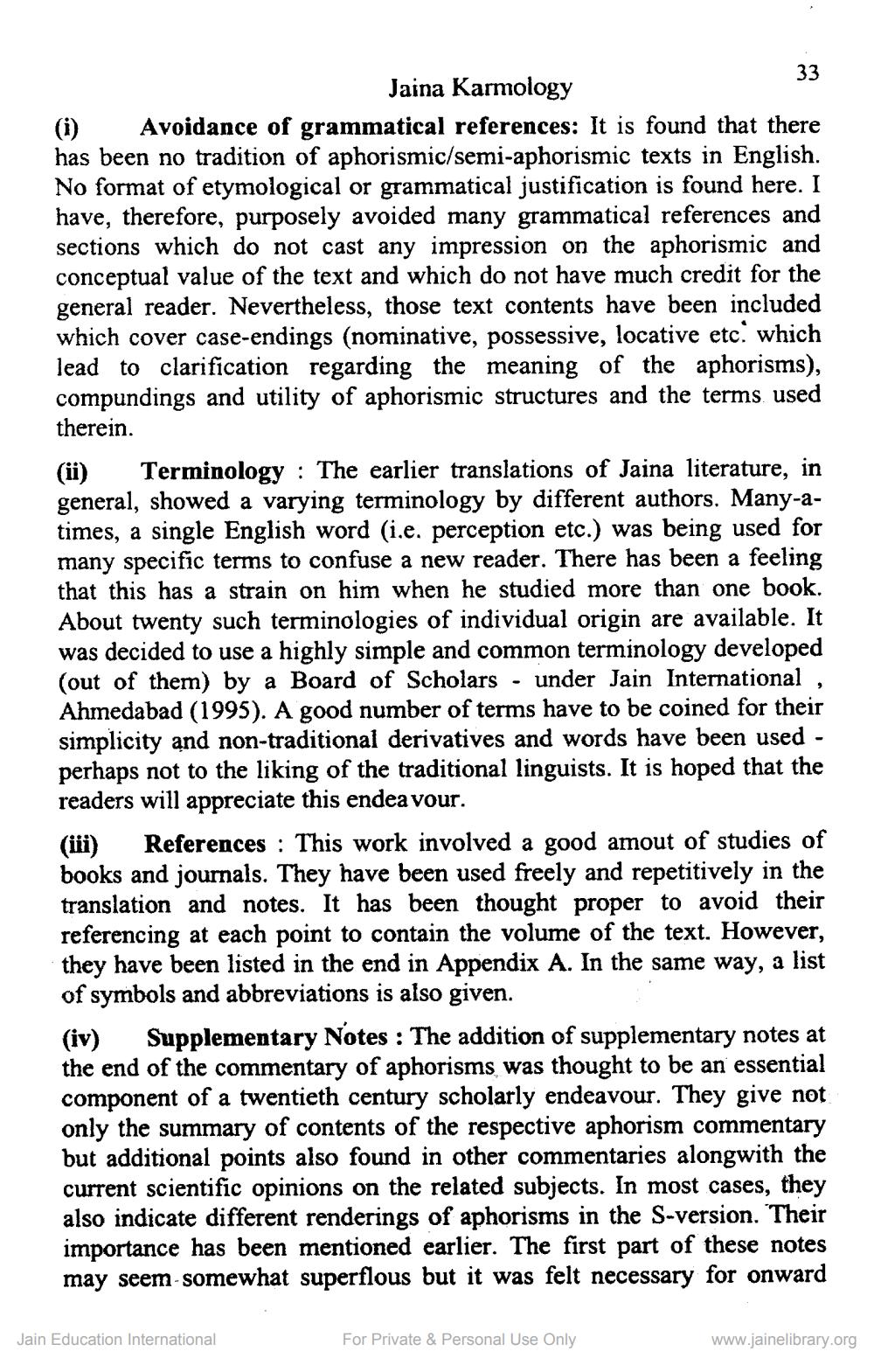________________
Jaina Karmology (i) Avoidance of grammatical references: It is found that there has been no tradition of aphorismic/semi-aphorismic texts in English. No format of etymological or grammatical justification is found here. I have, therefore, purposely avoided many grammatical references and sections which do not cast any impression on the aphorismic and conceptual value of the text and which do not have much credit for the general reader. Nevertheless, those text contents have been included which cover case-endings (nominative, possessive, locative etc. which lead to clarification regarding the meaning of the aphorisms), compundings and utility of aphorismic structures and the terms used therein. (ii) Terminology : The earlier translations of Jaina literature, in general, showed a varying terminology by different authors. Many-atimes, a single English word (i.e. perception etc.) was being used for many specific terms to confuse a new reader. There has been a feeling that this has a strain on him when he studied more than one book. About twenty such terminologies of individual origin are available. It was decided to use a highly simple and common terminology developed (out of them) by a Board of Scholars - under Jain International , Ahmedabad (1995). A good number of terms have to be coined for their simplicity and non-traditional derivatives and words have been used - perhaps not to the liking of the traditional linguists. It is hoped that the readers will appreciate this endeavour. (iii) References : This work involved a good amout of studies of books and journals. They have been used freely and repetitively in the translation and notes. It has been thought proper to avoid their referencing at each point to contain the volume of the text. However, they have been listed in the end in Appendix A. In the same way, a list of symbols and abbreviations is also given. (iv) Supplementary Notes : The addition of supplementary notes at the end of the commentary of aphorisms was thought to be an essential component of a twentieth century scholarly endeavour. They give not only the summary of contents of the respective aphorism commentary but additional points also found in other commentaries alongwith the current scientific opinions on the related subjects. In most cases, they also indicate different renderings of aphorisms in the S-version. Their importance has been mentioned earlier. The first part of these notes may seem-somewhat superflous but it was felt necessary for onward
Jain Education International
For Private & Personal Use Only
www.jainelibrary.org




